► 2020 Kia Ceed review
► New infotainment on the way, same seven-year warranty
► Third-gen Ceed from £18,855
In a world where the Volkswagen Golf has morphed into something tech-filled and button bereft, the Kia Ceed offers something different. It has heating control buttons for a start. But beyond that it feels as though the Ceed has been designed to make drivers’ lives as easy as possible.
Of course, its biggest competitor is the VW Golf. But there’s the Kia’s stablemate, the Hyundai i30 to contend with, as well as the excellent Ford Focus.
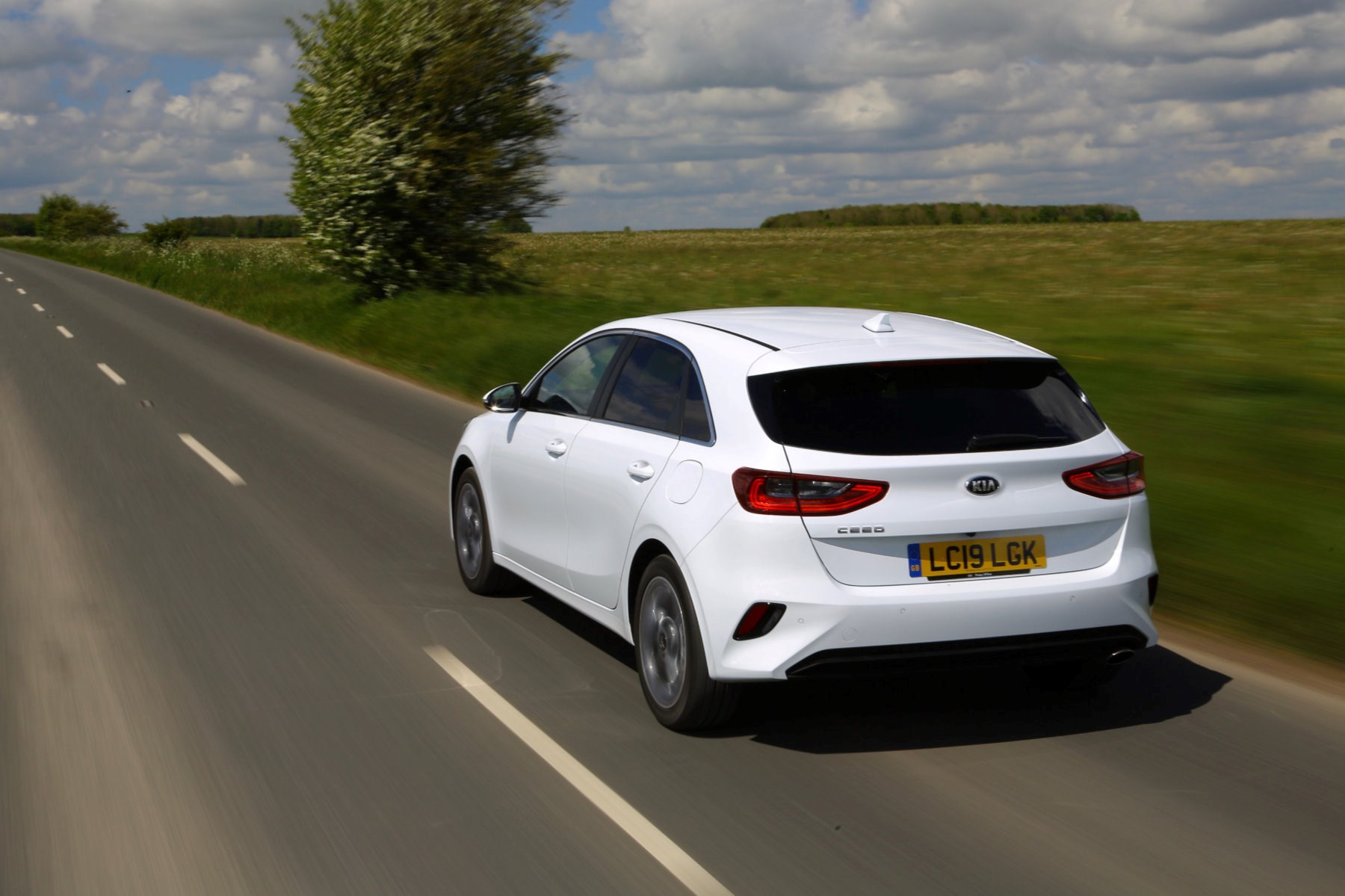
Priced from £18,885, this third-generation family hatch has spawned an array of Ceed family cars, all while offering a hugely appealing seven-year warranty and a general feeling of solidity that few other cars can muster.
Surprisingly, it’s a good steer too. Stiff front springs and a softish anti-roll bar work in harmony with an independent rear suspension to give the hatchback great body control. It corners flatly and with lots of grip and there’s even a cheeky nip of the inside front wheels’ brakes, to help tuck in the nose and pivot the car through bends.
The trade-off is a firm, if mechanically cultured, ride. The Ceed feels sucked to the road, closely following its topography, tied down at cruising speeds and bouncing and jostling over high frequency bumps. The ride and handling team developed the car on UK roads as well as Germany’s Eifel mountains, so it isn’t flummoxed with our bombed-out tarmac. But beware this is a car that will tickle enthusiasts more than cosset comfort-lovers: it’ll even cock a wheel if you go for it in corners.
Browse Kia Ceed for sale
How about a range overview?
The Ceed is designed and engineered in Europe for Europeans, with fewer conflicts and compromises than if developed to satisfy Asian or American tastes as well.
The third-gen Ceed is available as five-door hatch, a 625-litre-lugging practical estate and GT warm hatch, with an old-gen Merc CLA-style shooting brake called the Proceed (no more three-door hatches here), and the Ceed has even spawned a mini-SUV in the shape of the XCeed.
Plain Jayne styling
Kia’s tagline is the power to surprise, but this corporate message obviously hasn’t found its way to the design team. It’s not ugly by any means. But it certainly offers little in the way of surprise. It’s safe. The sort of design aimed at people who don’t want to make a fuss.
From the front it’s as neat as a librarian’s desk, and about as exciting too. The rear lights are at least sharp. Like many other cues of the Kia they’re neat rather than outlandish or noteworthy.
The side profile is helped by cars on larger wheels. Top spec cars get 19-inch wheels, which go some way in making the car seem just that bit more interesting. We guess if you wanted a more interesting looking Ceed, you’d opt for the Proceed or XCeed.
At least it’s practical. This Ceed has the same overall length and wheelbase as the previous model, though the wheels have been shifted forward to decrease the front overhang and boost the rear’s. That triggers a 395-litre boot which is super-accessible thanks to a low lip. Shoulder room is spot on, as is headroom. There’s just enough space for a six-footer to sit behind another six-footer, albeit with a minor amount of knee grazing on the seats.
And the engines…?
The UK engine lineup for the Kia Ceed looks like this:
- 1.0-litre petrol 118bhp
- 1.4-litre petrol 138bhp
- 1.6-litre petrol 201bhp
- 1.6-litre diesel 114bhp
The entry-level powerplant is a 1.0-litre turbo, which will guff out 128g/km of carbon dioxide: this 118bhp three-cylinder is borrowed from the Picanto and Stonic. Then there’s a 1.4-litre T-GDI (for turbocharged and gasoline direct injection) and a common-rail diesel 1.6-litre CRDI. Both these engines have tailpipe filters to reduce emissions.
The 1.4-litre petrol is like so many turbocharged four-cylinders: blessed with a broad band of acceleration from pretty low revs (about 1300rpm), but with a soundtrack that’s more vacuum than Wagner. The 138bhp unit has plenty of punch to overtake in the outside lane of the motorway. 0-62mph takes 8.9sec with the six-speed manual gearbox.
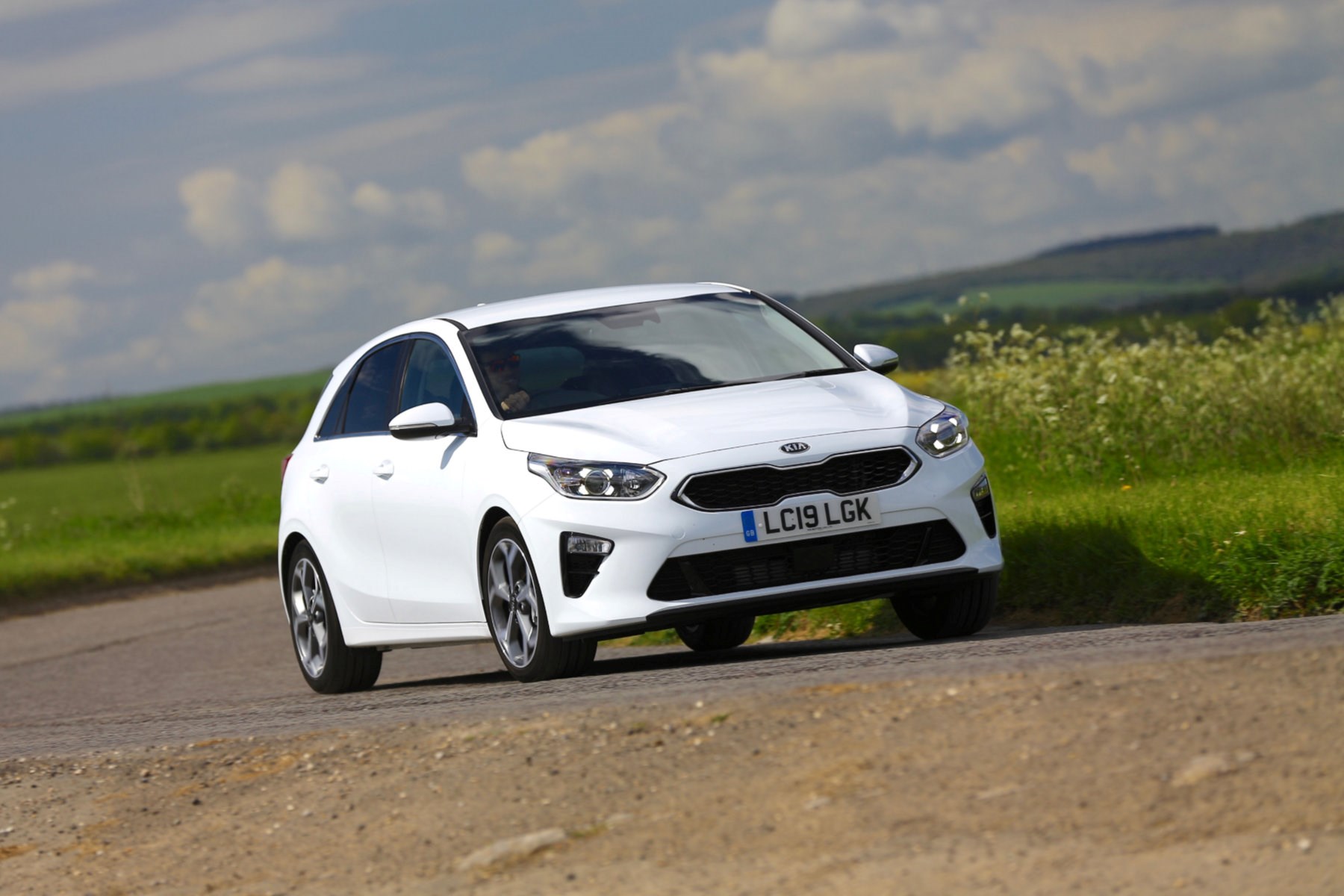
That ‘box is the Ceed’s weakest link: its throw is ill-defined at speed, collapsing into a mess quicker than an England penalty taker. The 1.6 engine ticks over unobtrusively at motorway speeds, and wind and tyre noise are perfectly acceptable. Over 50miles of mostly B-road driving, the trip recorded 34.4mpg – the official figure is 47.9 to 50.4mpg, with CO2 emissions ranging from 128 to 135g/km.
Is the new 1.6 diesel any good?
The 134bhp diesel is grunty and generally smooth, though it transmits a few more vibrations to the cabin than the petrol. This Ceed’s responsive turn in and overall agility feel marginally blunted by the heavier engine in the nose, though it still steers sweetly and rides firmly.
We’ve tested the diesel with the seven-speed dual-clutch transmission. The DCT can handle more diesel torque than the manual – peaking at 236lb ft – which shaves three tenths off the manual’s 10.2sec standstill to 62mph sprint.
The DCT shifts smoothly in normal mode, and makes light work of a long stretch of fast corners, swapping between fifth and sixth and kicking down to fourth to accelerate out of particularly tight bends. This transmission comes with a Sport mode, but it seems superfluous with the standard set-up hitting the spot. A quick spurt in a petrol DCT in Sport mode did suggest a sharper throttle response, which can be a bit two-stage in normal mode.
Your fingers may go feeling for wheel-mounted paddles to shift gear manually, but they’ll search in vain. You can take control by pulling the gear selector back for down and push for upshifts, but it’s a bit ungainly and dated.
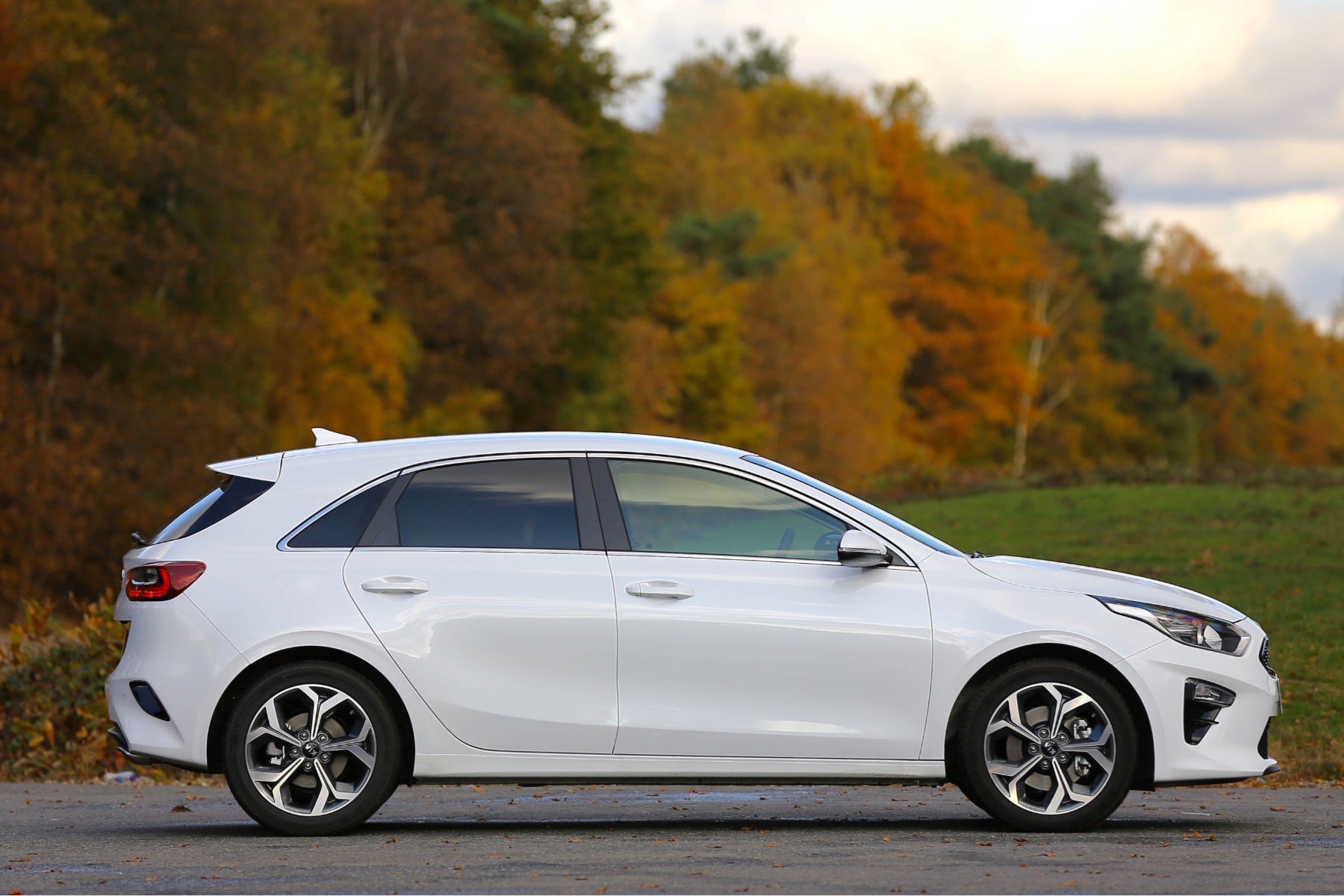
Diesel Ceeds are also available as a mild-hybrid. EcoDynamics+ models gain a 48v starter/generator that can cut CO2 emissions by 5-10% by allowing the car’s engine to switch off earlier and more regularly than a stop/start system. It can also coast with the engine off in the right circumstances. Kia has also completed a world’s first: it’s the first carmaker to use a 48v mild-hybrid system with an electronic clutch and a manual gearbox. It calls the system iMT…
What’s the deal with iMT?
It stands for intelligent Manual Transmission and it basically allows Ceeds with 48v mild-hybrid assistance to coast in neutral, without the need for any human interaction. The benefits: a few more MPG, a few less emissions.
It works nigh-on seamlessly. Lift off the throttle and once it enters sailing mode the revs drop, and a little boat symbol comes up on the drivers display. Dip the clutch or press the throttle to reinstate the motor. It takes about half a second to wake up. This isn’t annoying, but if you’re looking to make an overtake on an a-road it’s worth remembering.
It’s very easy and requires no effort whatsoever. It only really works when you’re in the ‘right gear’ – otherwise it won’t kick in.
That cockpit looks a bit retro, and not in a good way…
The vibe up front is overwhelmingly black and plastic. But the plainness does reveal traditional buttons and dials. Twist to change the heating levels. Push to turn on the heated seats. Flick the button on the steering wheel to activate the cruise control. It’s all self-explanatory and it all works. The driver-centric focus is helped by the fact that the words on the buttons are the sort of thing your nan could read.
Infotainment-wise, Kia’s high-end screens work well and look the part. At 10.25-inches there’s no excuse for missing sat-nav instructions.
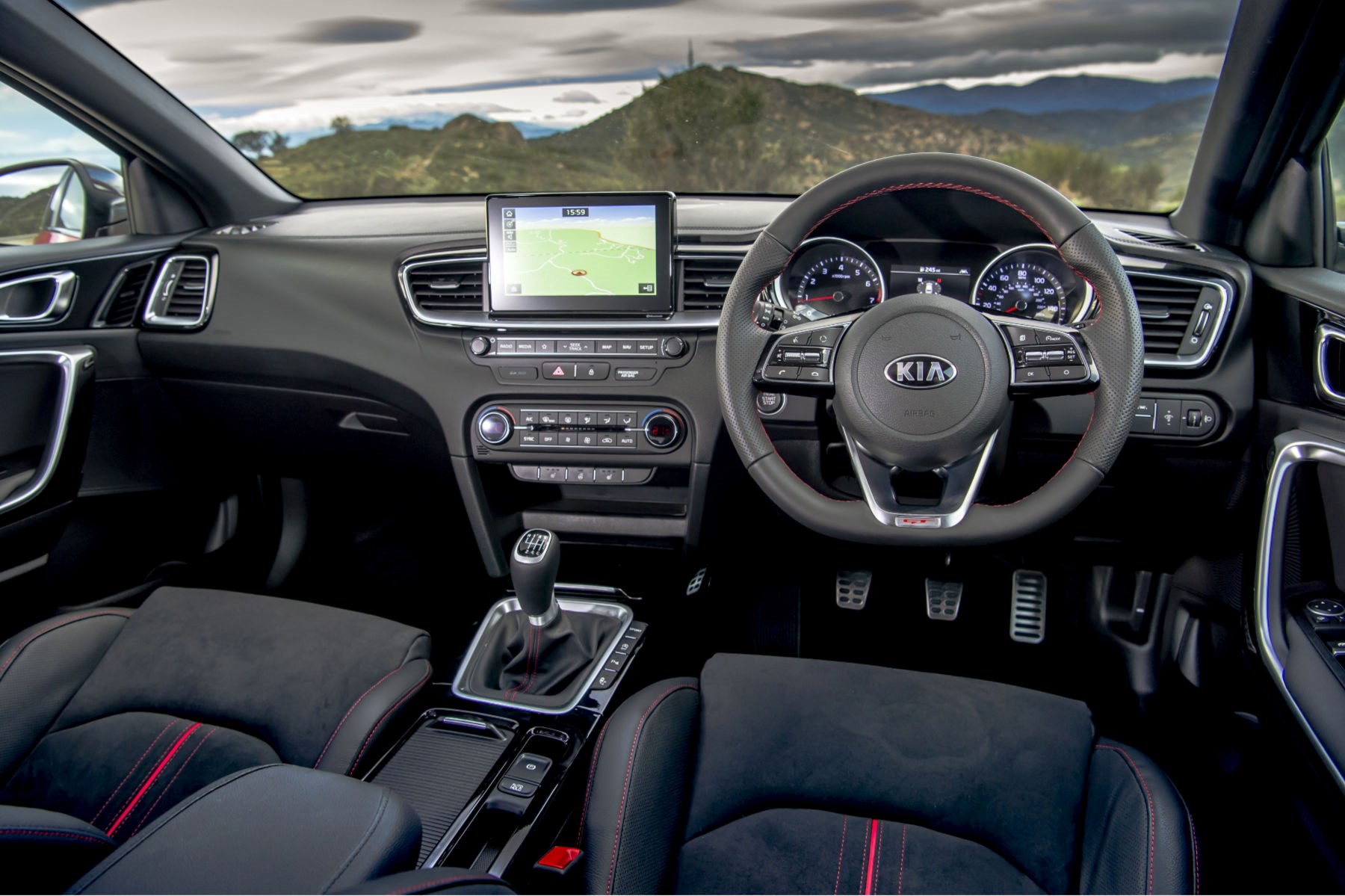
And while this kind of interior may not appeal to those desperate for something futuristic and tech-heavy, there’s virtually no leg to stand on if you want to criticise the Ceed’s ergonomics. Because there are buttons for all major functions, because the controls are simple and because it isn’t trying to be too fancy, it’s incredibly easy to just get along with how this car works. Something that can’t be said for many button-scarce dashboards of its rivals, like the VW Golf.
Don’t get us wrong – the Ceed does have its share of cutting-edge tech. There’s Apple CarPlay and Android Auto, wireless ‘phone charging, automated parking, forward collision warning and blindspot monitoring. And the Ceed can drive itself on the motorway, if you set the active cruise to maintain its distance from the car in front, and activate the lane keeping assist to trigger boundaries which the steering stays within.
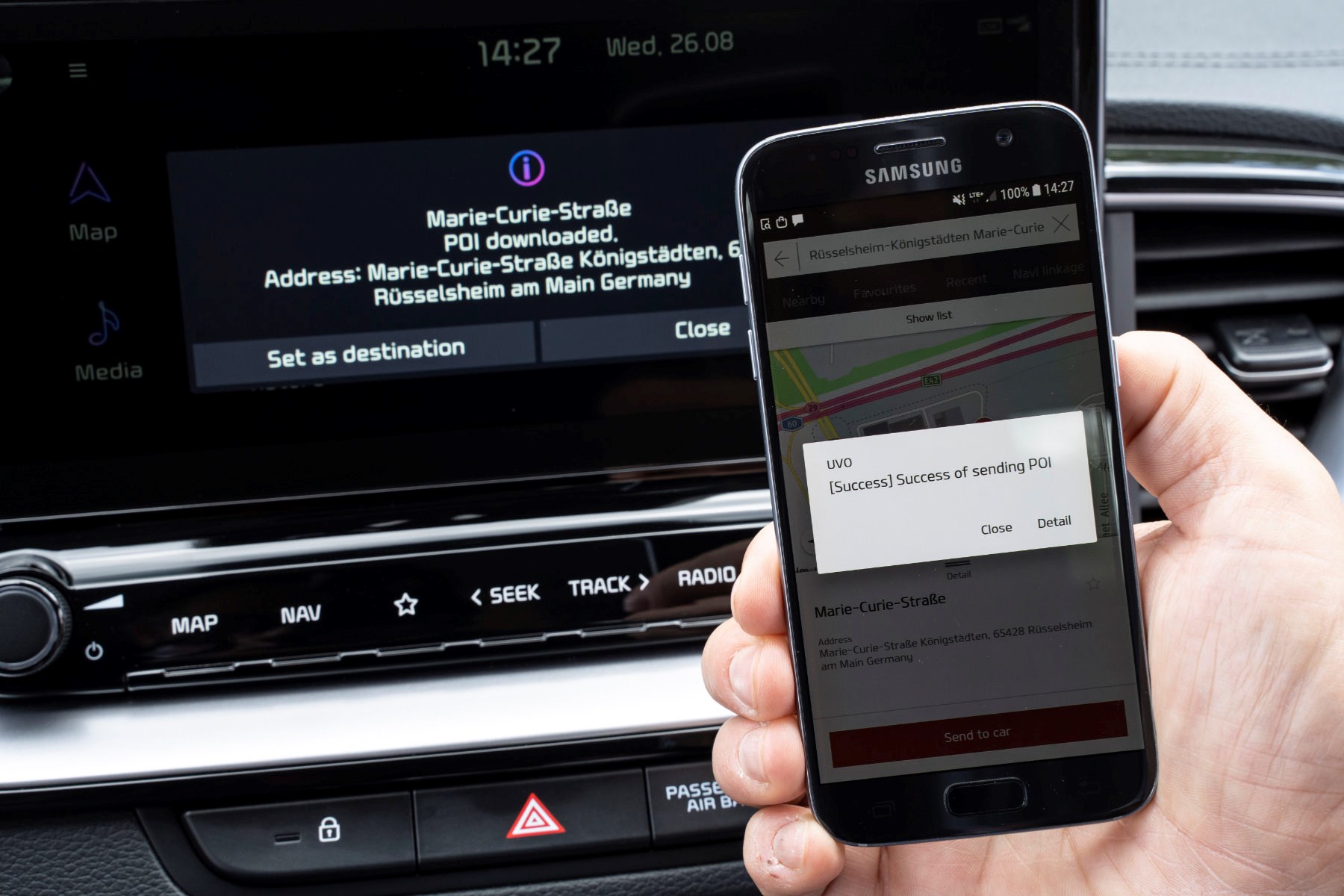
The model we drove had Kia’s latest version of its internet-connected service, called UVO. It works through an app on your phone, much like you’ve probably seen on a lot of cars. Where Kia’s is different is that it’s thought about what happens when you stop driving.
For instance, if your destination is in a pedestrianised zone in a city. Once you’ve parked up, the app can take you to it via augmented reality. This uses your phone’s camera to point to where you want to go in real time. It works well, with simple arrows pointing you in the direction of your travel.
What’s it like to drive?
The Ceed hatchback pulls a rabbit out of the hat in a way you really won’t have expected: it’s really sharp to drive, and that’s not just the GT model, either.
No really. You feel it the moment you wind on the steering for the very first time: if you’re even milimetres off dead centre and the nose responds, following your line like a hypnotist drawing a subject’s eyes across the room.
The rack’s weighting would satisfy Goldilocks – not too heavy, not too light – and it remains consistent and progressive as you add lock. Whether swooping along undulating country roads or trundling around town, the accurate Ceed is a rewarding car to pilot.
It’s a great companion on motorway journeys too. It rides with aplomb, and wind noise is kept in check. The diesel is especially effortless at chewing through hours on the M1.
What about the Ceed GT?
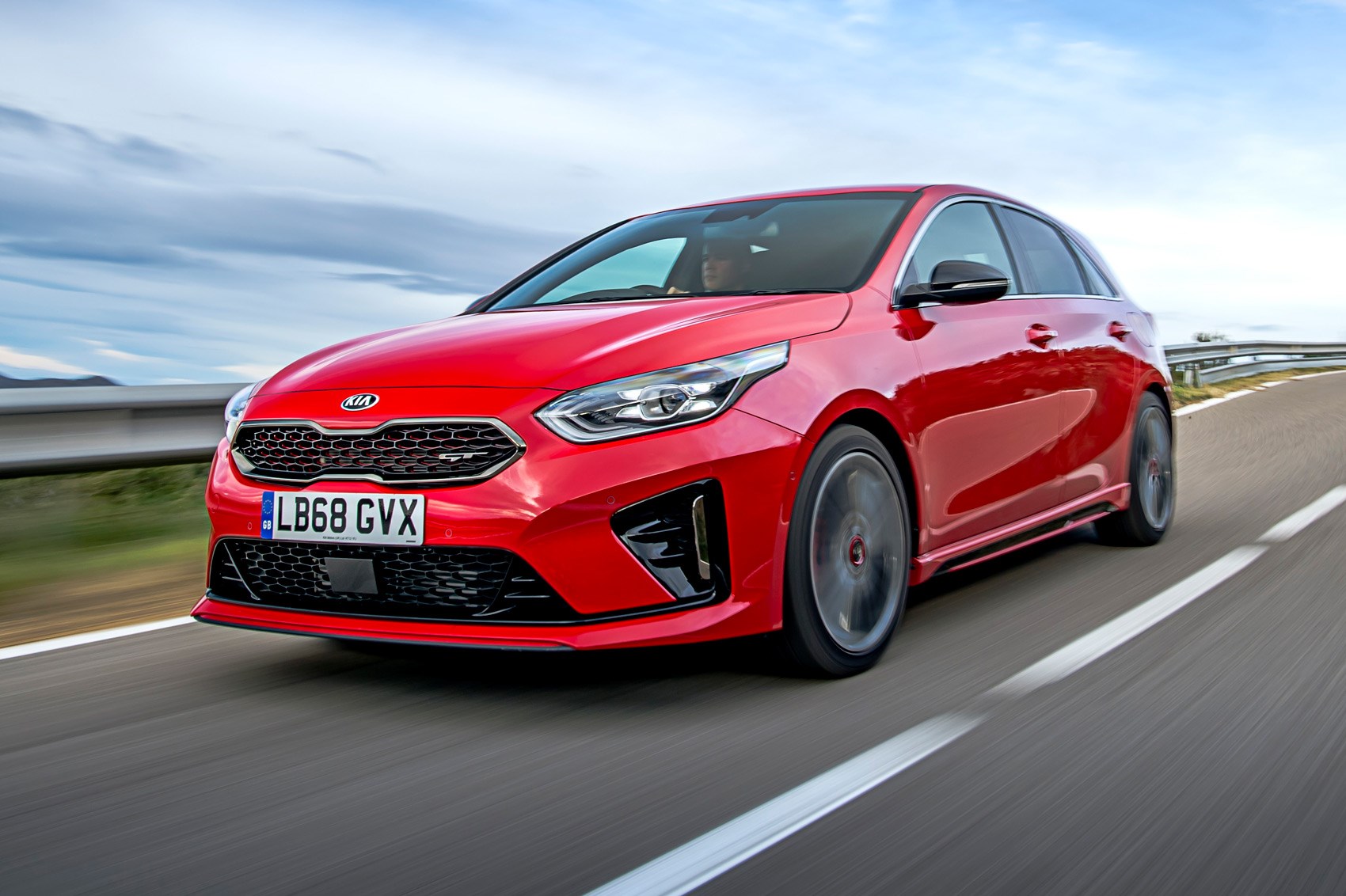
The Ceed GT is powered by a familiar 201bhp 1.6-litre turbo petrol, mated to a six-speed manual gearbox. It’s good for a 0-62mph sprint in 7.2 seconds, and will reach 143mph top speed if you should find yourself in such a place where you can reach that.
On start up, you’re made more than aware that this is a little different, with the kind of bark from the engine and snarling exhaust that you’d expect from something much more impolite than a humble Kia Ceed. Granted, some of it is piped into the cabin, but even outside the car the sports exhaust is quite a shouty one. We like.
The GT also sits lower on stiffer suspension than the regular car, which should afford it a more engaging, sportier feel.
Apart from the bigger engine, the only main differences are cosmetic. Outside, there’s a more aggressive looking body kit with deeper bumpers, plenty of piano black trim and larger 18-inch wheels with red details dotted around the car.
Inside, it’s a similar theme with plenty of glossy black plastics with red details, a set of suede/leather sports seats and a flat-bottomed steering wheel. And a Sport button.
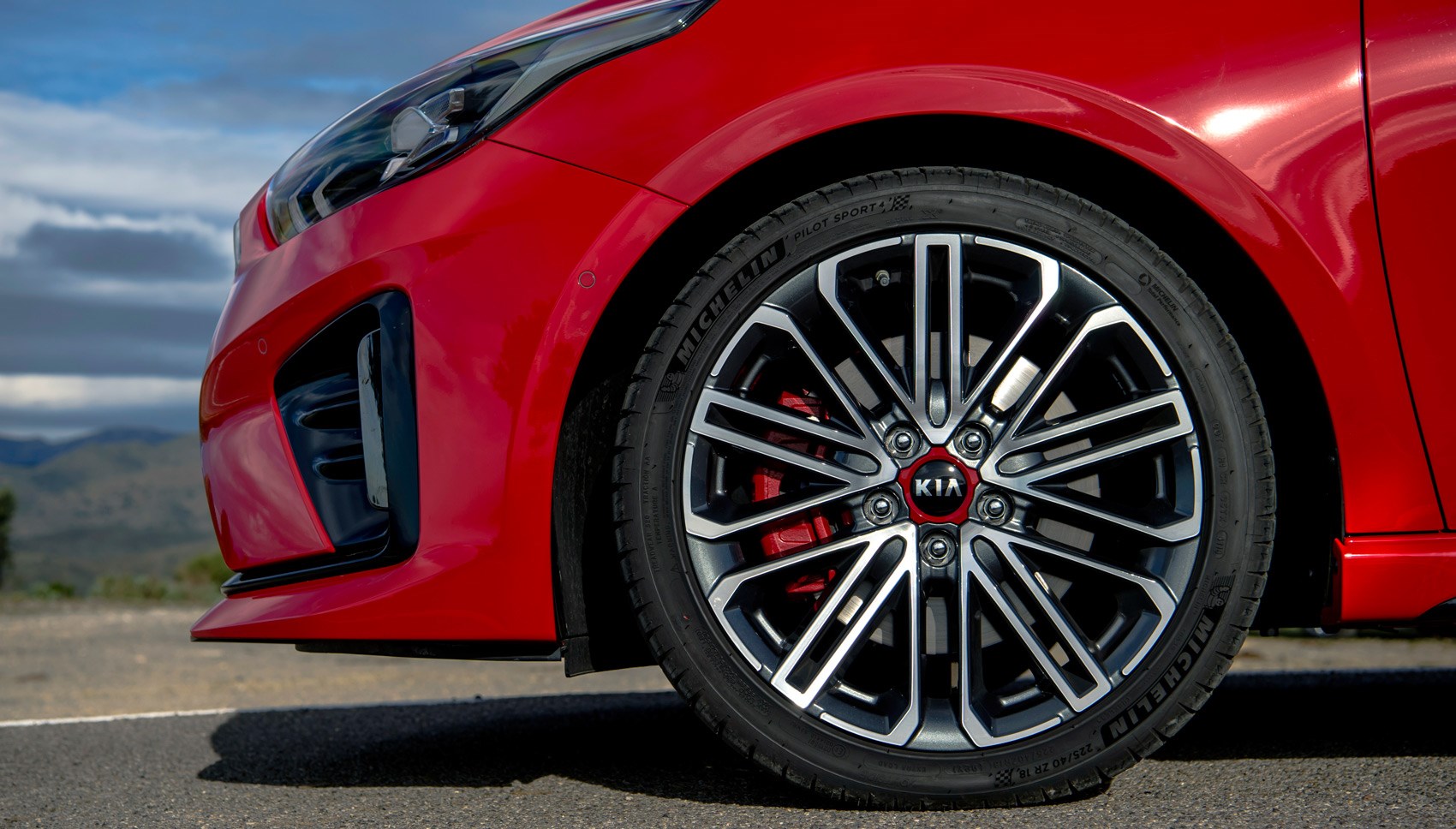
The changes are minimal then, and while the regular Ceed’s cabin is nothing to write home about, it does feel premium enough inside to feel like it’s worth paying the extra for, and the extra GT additions add a bit of interest. The best part about it inside is that everything just works. Everything’s easy to find and simple to operate. And that’s all we ask for in a car like this.
As soon as you slot yourself into the heavily sculpted suede sports seats, you’re immediately aware Kia has managed to nail the driving position. You sit nice and low, there’s a wide range of adjustment and all the controls just work. The leather steering wheel has a nice feel and the seats are an excellent blend of comfortable and supportive.
The engine is also worth talking about. That sounds like an obvious statement in a warm hatch, but it’s surprising how eager and lively it feels for something that’s not a full-bore hot hatch. It feels strong from low revs thanks to its 195lb/ft well of torque to call upon, and is keen to rev to the redline and push on.
And when you do push on, the Ceed’s tidy handling and well-sorted chassis come to light, with a keen turn in and minimal body roll. There’s some understeer to contend with if you push too hard, but that’s not entirely surprising.
Then there’s that sound. It may sound a bit synthesised, but the immediate thought when you start it up is one of surprise and delight. You don’t expect this car to be as loud as it is, and we like that.
But while we like the GT-suitable looks of this range-topper, anything with some kind of sporty pretensions could always look a bit meatier and get away with it. Still, Kia has managed to make a well-balanced car that’s very much deserving of that GT badge on the boot.
The main issue some will have with the GT is that it’s quite pricey. Yes, the performance is good, but at more than £26,000 it’s knocking on the door of the regular Hyundai i30 N with fifty more horsepower.
On the flipside, the Ceed does come loaded to the roof with kit that the i30 doesn’t offer.
Kia Ceed: verdict
Kia has manufactured some 1.3 million Ceeds since production began in 2006. Obviously this third-generation moves the game on big time, with decent new engines and a stepchange in dynamics.
But prices have been creeping up, and the most desirable top-spec models command some high cash prices. But one thing’s for sure, it’s certainly a good steer, and it comes packed with equipment that you’d have to pay extra for on plenty of its rivals.
However, the Ford Focus is equally well-equipped, is as good to drive, and is ergonomically superb, too. While the VW Golf seems much more modern, especially inside. Still, the Kia comes with an industry-leading seven-year warranty, and its innovative manual gearbox/48v mild-hybrid assistance means those who prefer a manual are still well catered for.
Browse more of our Kia reviews